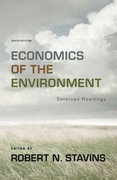Question
Which of the following savings options offers low liquidity but allows an individual to deposit money several times? A savings account A money market account
Which of the following savings options offers low liquidity but allows an individual to deposit money several times?
- A savings account
- A money market account
- A dedicated savings account
- A certificate of deposit
Crimson Corp. pays an annual dividend of $0.50. Its dividend growth rate is 2%. Linda is planning to invest in Crimson stock and her required rate of return is 8%.
Using the discounted dividend valuation model shown below, the stock value of Crimson Corp. is __________.
Discounted dividend valuation model = {Dividend (1 + Dividend growth rate)} / (Your required rate of return Dividend growth rate)
- $8.33
- $6.38
- $5.00
- $8.50
Which of the following is a feature of a passively managed mutual fund?
- A passively managed mutual fund always invests in stocks whose market price is expected to rise sharply.
- A passively managed mutual fund invests in stocks that are undervalued and are available at rates lower than their actual value.
- A passively managed mutual fund is managed by a group oftrained professionals and has higher brokerage costs than actively managed funds.
- A passively managed mutual fund invests in the same set of stocks as found in the market index.
Mark has a small business and he frequently dips into his savings to keep the firm afloat. He decides to invest all of his savings to maximize his returns over the next 5 years. He has alow to moderate level of risk tolerance and invests all his savings in real estate.
Why is real estate not a productive choice of investment for Mark?
- Real estate is the most liquid asset one can own.
- Real estate investments decrease in value over time.
- Real estate is not a liquid investment option.
- Real estate has low marketability risk.
At what price is a stock purchased if an investor places a market order to purchase stock?
- The stock is purchased at the current market price.
- The stock is purchased at the price specified by the investor.
- The stock is purchased at the lowest market price noted in the next 3 days from the day the market order is placed.
- The stock is purchased at the highest market price noted in the last 10 days from the day the market order is placed.
Alex wants to purchase a car. He begins to shop for an auto loan.
What information does he need to have before he selects an auto loan?
- He needs to identify the car dealership he wants to buy the car from.
- He needs to determine the make and model of the vehicle he is interested in buying.
- He needs to obtain an estimate of the insurance amount he will have to pay toward the car.
- He needs to determine the total amount he can afford to spend on the car.
Using your problem-solving skills, identify the financial alternative among the following that provides loans with a reasonable rate of interest.
- Title loans
- Payday lenders
- Pawn shops
- Personal loans from the bank
In which of the following cases would prioritizing liquidity over returns be the most productive choice?
- Hanna needs to start an emergency fund for her household.
- Julio wants to double his initial investment to pay off his mortgage quickly.
- Anton, who is 33 years old, wants to begin investing for retirement.
- Chloe wants to buy a large piece of land as an investment.
Mark starts a new job in another state and decides to buy a house rather than renting one.
Which of the following is true if Mark buys the house?
- He will have to pay a large security deposit on the house.
- He will have to pay city and state taxes on the house.
- He will have topay a fixed monthly cost to his landlord.
- He will have limited ability to make improvements to the house.
A pharmaceutical company issues bonds to raise money for expansion.
Which of the following is true in this scenario?
- There is less volatility as bondholders cannot sell bonds before the maturity date.
- The interest the company pays to bondholders is tax deductible for the company.
- Bondholders are entitled to dividends only if and when a firm's board of directors decides to make a payment.
- Bondholders will own a percentage of the company.
Anisa sells shares in the company she created through an initial public offering (IPO). She maintains the majority of shares in the company after the IPO.
Which of the following is true for Anisa's situation?
- Anisa must pay the other shareholders dividends from the company's profit.
- Anisa will no longer make any decisions regarding sales, dividends, or other issues.
- Anisa's shares in the company are considered privately held stocks.
- Because Anisaowns 100% of her company, she is free from payingdividends to shareholders.
Step by Step Solution
There are 3 Steps involved in it
Step: 1

Get Instant Access to Expert-Tailored Solutions
See step-by-step solutions with expert insights and AI powered tools for academic success
Step: 2

Step: 3

Ace Your Homework with AI
Get the answers you need in no time with our AI-driven, step-by-step assistance
Get Started


